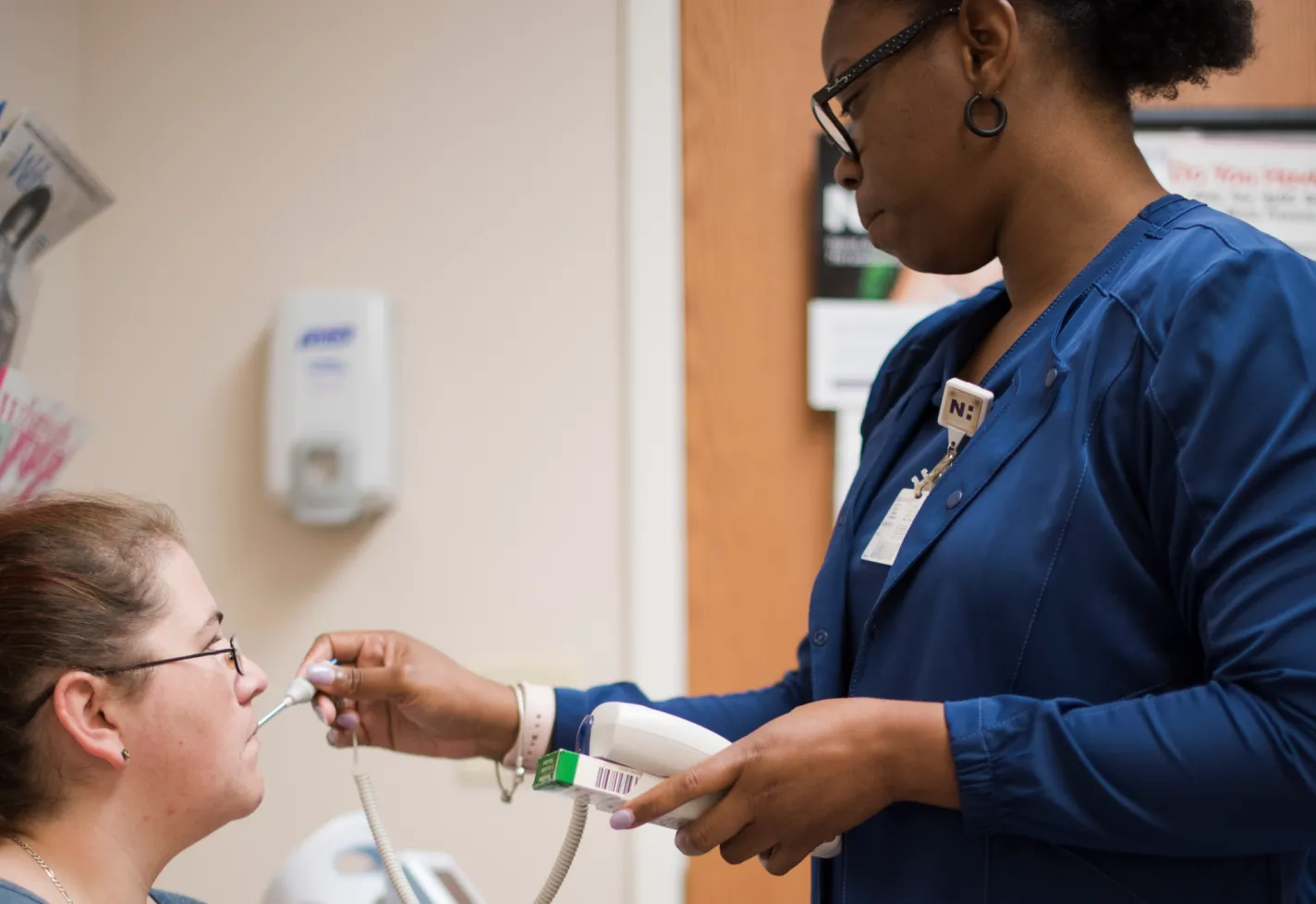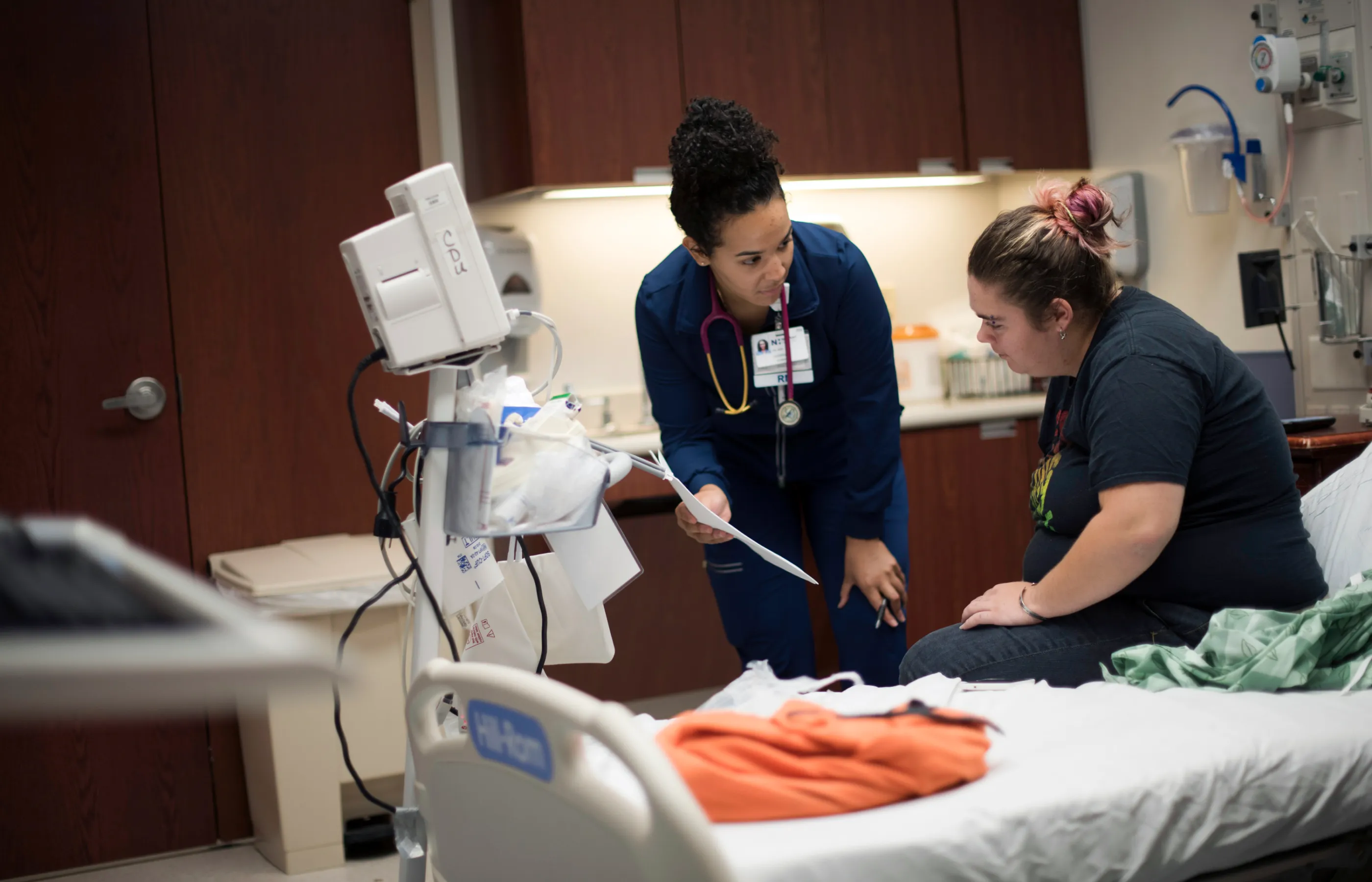Painful or Irregular Periods
Specialized care for every woman
If your period is disrupting your daily life, you're not alone. Whether you're experiencing typical menstrual symptoms, irregular periods or a menstrual disorder, we provide reassuring, personalized care and the latest treatment options.

What is premenstrual syndrome (PMS)?
Premenstrual syndrome (PMS) refers to symptoms that occur in the week leading up to your period and may last several days after menstruation begins. Common symptoms include:
- Mood swings or unexplained changes in behavior
- Food cravings
- Variations in appetite
- Fatigue and disrupted sleep patterns
- Cramps and bloating
While these symptoms can be bothersome, they usually aren't cause for concern. You can often
manage these symptoms through simple remedies like over-the-counter medications, a diet high in complex carbohydrates and regular exercise.
PMS is extremely common. About three-quarters of all women will experience PMS symptoms at some point when they're of childbearing age.
When should I be concerned?
If your premenstrual syndrome symptoms become so intense that they interfere with your everyday routine or you do not get any relief from over-the-counter medications or lifestyle changes, this could indicate a more serious menstrual condition like amenorrhea, metrorrhagia or dysmenorrhea. Speak to your ob-gyn so they can help you find out what could be causing your severe symptoms and find your best treatment options.
What Is premenstrual dysphoric disorder (PMDD)?
Premenstrual dysphoric disorder (PMDD) is similar to PMS but has more extreme psychological symptoms. These include severe mood swings, feelings of hopelessness and depression and excessive anger. PMDD is typically treated like PMS with the addition of psychological therapy or antidepressants to help manage these acute symptoms.
Though not as common as PMS, up to 6% of women experience PMDD as part of their regular menstrual cycle.
Am I at risk for PMDD?
PMDD can develop in any woman of childbearing age. However, it's usually associated with a family history of PMS or PMDD and mood disorders, particularly depression. Smoking is also a possible risk factor for PMDD.
How are PMS and PMDD diagnosed?
Speak with your gynecologist if you have symptoms of PMS or PMDD. Besides your symptoms, they'll ask about your family and personal history of medical and mood disorders. Your ob-gyn needs to distinguish PMS or PMDD from other gynecological conditions like endometriosis, which can also cause severe abdominal cramps. They may ask you to track your symptoms for several menstrual cycles to find patterns and better evaluate your condition.
How can I track my symptoms?
Pay close attention to any symptoms and take notes or record them. The more accurately you can track patterns in the onset, severity and relief of your symptoms, the easier it will be for your gynecologist to determine if you're experiencing PMS, PMDD or another condition.
Depending on your ob-gyn's initial assessment, they may ask you to track specific aspects of your menstrual cycle to understand your condition better. Many women now use a period tracker app to more easily and accurately track their symptoms.
Relief for Painful Periods
Your provider can help you find out the cause behind your painful periods. Premenstrual syndrome is a common and treatable condition, and treatment is usually noninvasive. Your provider can also help diagnose and treat other conditions leading to painful periods.

